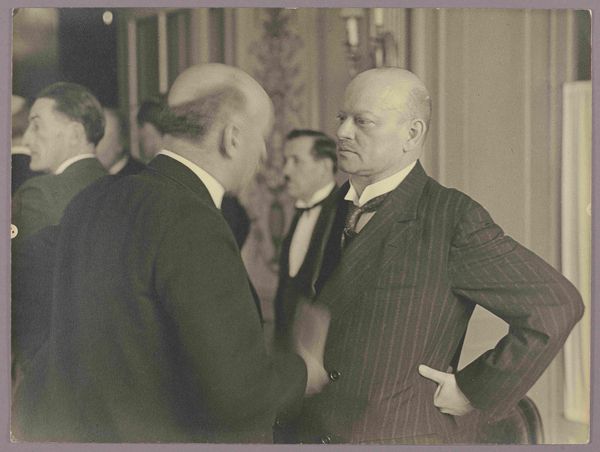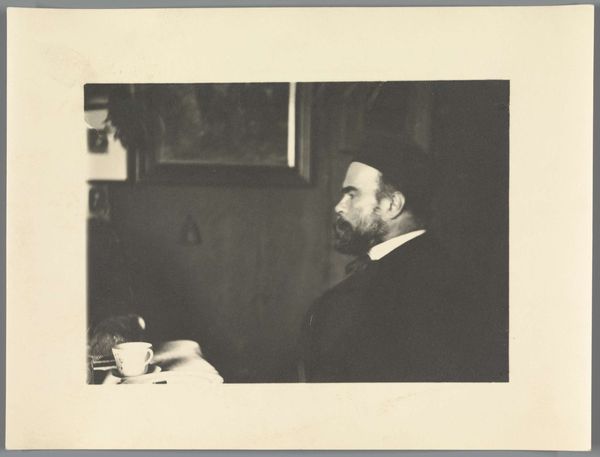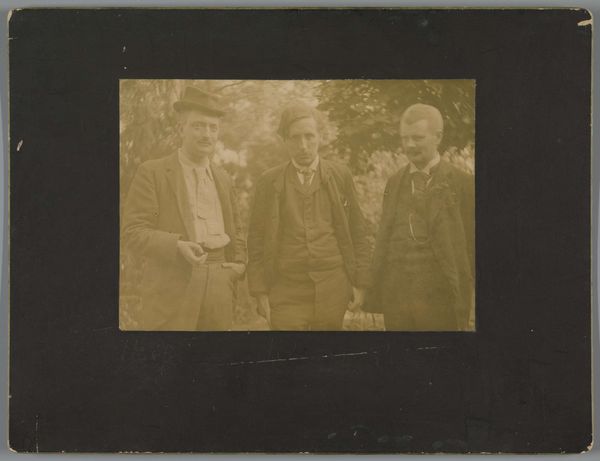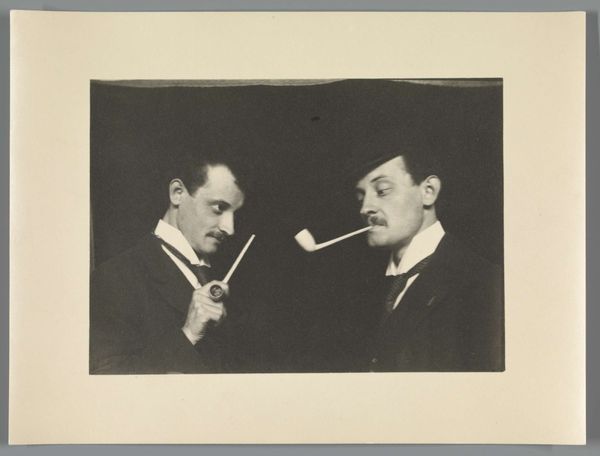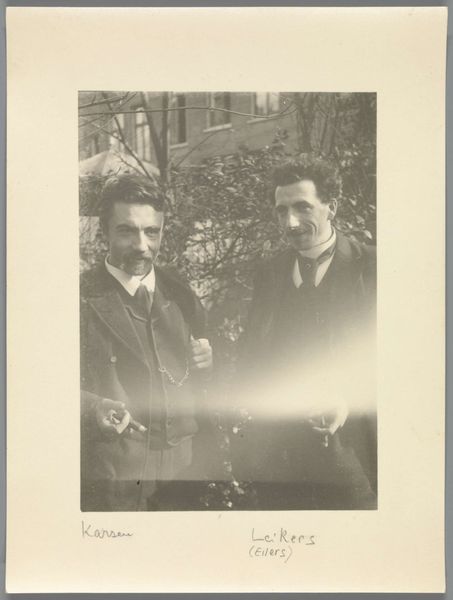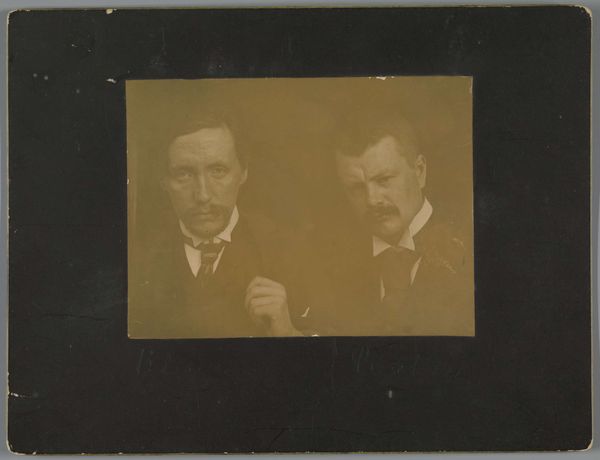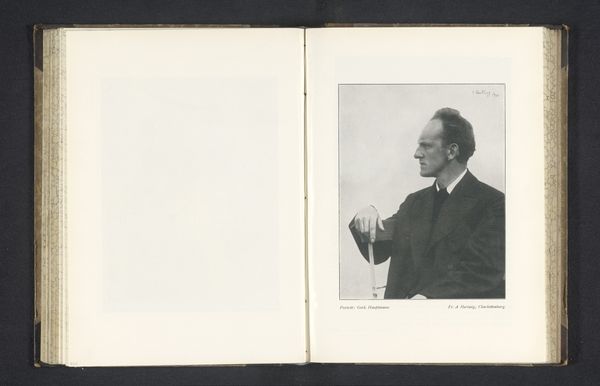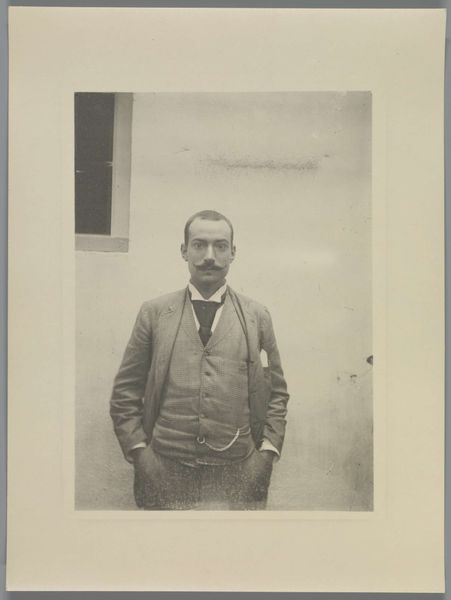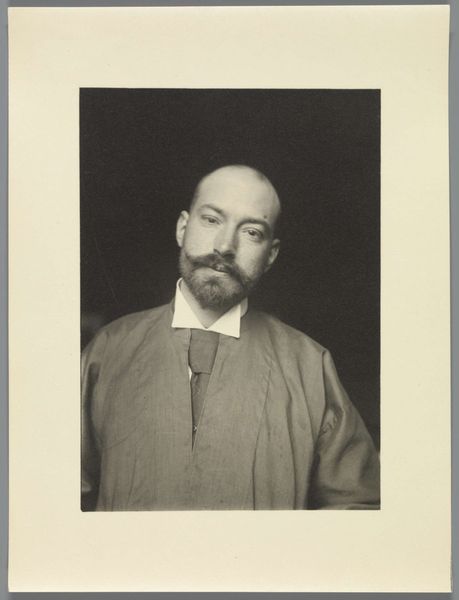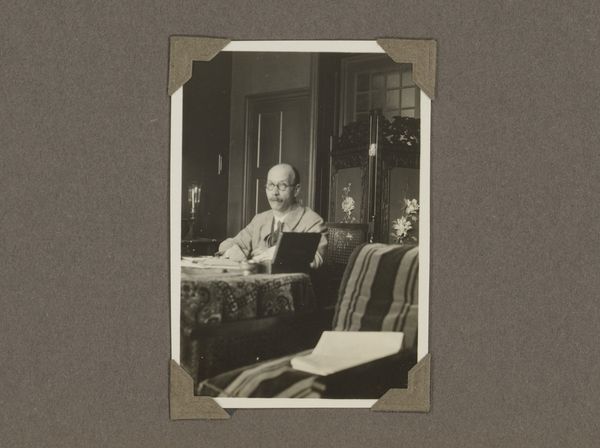
photography, gelatin-silver-print
#
portrait
#
self-portrait
#
photography
#
gelatin-silver-print
#
modernism
Dimensions: height 174 mm, width 231 mm, height 119 mm, width 168 mm
Copyright: Rijks Museum: Open Domain
Curator: This gelatin-silver print, dating from roughly 1860 to 1915, is entitled "Reproductie naar een foto van Willem Witsen." The photograph is held here at the Rijksmuseum. Editor: My initial impression is one of stark introspection. The doubled image feels like a visual representation of someone grappling with their inner self. It almost possesses the uncanny quality of a doppelganger narrative. Curator: Indeed, the dual representation heightens the sense of a divided self. The repetition encourages symbolic readings—a fragmented identity reflecting Modernist anxieties concerning the individual within society, particularly in the fin de siècle era. This can often echo classical or Renaissance ideals of dueling selves within a portrait, perhaps made anew. Editor: Given the photographic medium, how might that influence its societal function versus traditional portraiture? Was Witsen seeking authenticity or constructing a specific persona through its doubled presence? Curator: Photography in that era held a unique tension, considered both objective documentation and a medium ripe for manipulation. A doubled image questions photographic truth while exploring psychological truths. Moreover, photographic reproduction democratized portraiture. Did the modern subject multiply, become more fragmented under this reproductive gaze? Editor: I can't help but think about visual motifs that might inform his appearance. Consider his choice of garb. There’s a conscious creation of artistic identity taking place through composition, dress, and technique. Do you think Witsen meant to recall images of thinkers, philosophers, etcetera? Curator: Precisely. Witsen creates a visual statement. By reflecting upon himself, he invites reflection upon the observer, and perhaps, reflection of his ideals or beliefs within the artistic communities that came to view photography as their tool. Editor: The impact remains, then, this image serving not only as a representation of Witsen but as a wider historical mirror for early photography, reflecting modern notions of art and being. Curator: I agree, making the image as captivating to modern audiences as it was upon conception, even with an unknown original maker.
Comments
No comments
Be the first to comment and join the conversation on the ultimate creative platform.

